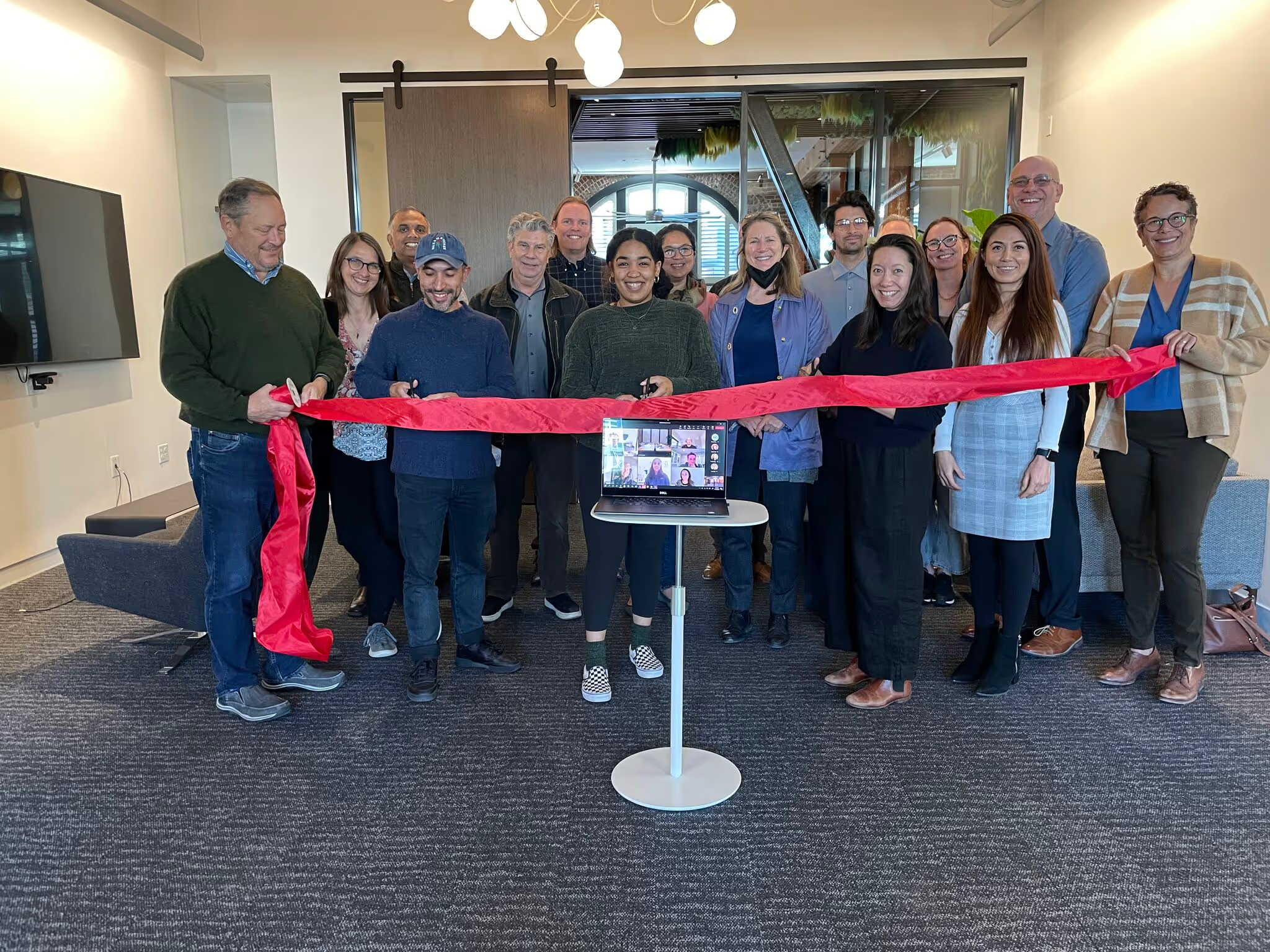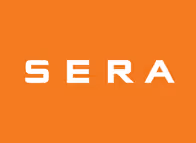

A custom combination of quarterly check-ins with an annual review that includes a 360 peer review.
SERA Architects Standardizes Their Process
Standardizing a custom combination of quarterly check-ins with an annual review that includes a 360 peer review.
A custom combination of quarterly check-ins with an annual review that includes a 360 peer review.
- Custom review cycles
- Qualitative goals
- 360 Reviews
- Private Performance Notes



I was looking for a system that would allow us flexibility and be easy for employees to use. But I also wanted to have a system that could grow with me and that wasn't really rigid.
Meet Valerie
Valerie Williams-Hurwitz is the HR Director at SERA Architects. Valerie, who is based in Portland, has been with SERA since 2015 where she manages a 4-person team. Valerie said she tries to honor the performance management systems of her predecessors while also moving her performance management process forward.
About SERA Architects
SERA Architects is an employee-owned firm of architects, urban planners, and interior designers that has been around for over 50 years and focuses on a holistic and integrated design approach. The company has almost doubled in size in the last five years from around 100 employees to approximately 180.
The Challenge
When Valerie joined SERA Architects, the existing performance management process was “manual” and full of paperwork. There were various documents and spreadsheets listing high-performance behaviors but they lacked clear definitions. Rating systems varied across managers and were therefore inconsistent between teams. Employees needed more training on how to deliver quality feedback and reviews, so HR would sit in on the review meetings, and their notes would become the review document.
The challenge for Valerie and her team was to create a “more effective and efficient” process while staying true to SERA’s collaborative culture.
Her first goal was to formalize the performance management approach across the entire organization. She took the leadership team through an exercise using the Lominger model, which allowed them to create a set of foundational competencies. This exercise set the stage for the next step of finding a system that would be able to deliver a structured performance management process. “We were growing fast and needed a performance management platform that was scalable and could be consistently applied across the firm,” Valerie shared.
Why PerformYard
When Valerie started to look for a performance management system to accommodate her new process, she searched for a platform that could provide flexibility, scalability and ease of use. But most importantly, she needed a system that would be visually appealing to design professionals.
She quickly realized some systems were too expensive; some were too complex; others weren’t able to deliver the features they advertised; until she came across PerformYard. “I was looking for a system that would allow us flexibility and be easy for employees to use,” Valerie said. “But I also wanted to have a system that could grow with me and that wasn't really rigid.”
Valerie shared that PerformYard’s platform checked all her boxes. She also mentioned PerformYard’s ability to accommodate different ways of doing reviews and delivering feedback to be innovative and out-of-the-box.
“The flexibility of PerformYard allows us to be open, responsive and adaptive.”
“PerformYard, the company, is always looking at different ways of doing things,” Valerie said. She mentioned that PerformYard’s Customer Success Team has lived up to their promise and customized the system to accommodate SERA’s performance management process.
Valerie also shared that SERA’s employees appreciate the simplicity of PerformYard. “It's a visually appealing and simple tool, so people find it fairly easy to navigate and put information in.” She said “PerformYard allowed us to build structure in our performance management process, so it feels manageable for employees “
The Process
SERA Architects uses a combination of quarterly check-ins and annual reviews to consistently assess employee performance across the firm.
The annual reviews include peer reviews, a self-review and the manager review. For some employees there are also reviews from project managers or studio leaders. The annual review forms assess employees based on company-level competencies and job specific functional competencies. This allows for standardization across all employees while also keeping questions relevant to their work. “If we want to be consistent in how we're assessing people, then we need to have some kind of standard approach to things,” said Valerie.
The annual review cycle is based on the anniversary of the employee’s hire date, but the forms become available to all employees as of January 1 so they can start compiling their thoughts, ideas and notes throughout the year.
The quarterly check-ins create a casual space for managers and employees to discuss performance and career progression. They are also a moment for managers to find ways to support employee’s career goals. “The intention is to have quarterly check-ins be an ongoing discussion about how people are doing, what their career goals are, and how we can help them get there,” said Valerie.
Results
Before PerformYard, there was a perception that whoever had the loudest voice and best relationship with key decision makers would be heard more frequently. Now SERA Architects performance management system helps prevent possible favoritism from happening and that has been a very positive change. “Bringing in PerformYard’s performance management system has made it so the process is much more transparent,” she shared.
SERA Architects is proud to provide consistency around performance management and hold its employees accountable to the same standards. “PerformYard’s platform allows us to provide a framework and structure around performance management and clearly show employees what they are being held accountable to."
The Challenge
The Process
The Result
Meet Valerie
Valerie Williams-Hurwitz is the HR Director at SERA Architects. Valerie, who is based in Portland, has been with SERA since 2015 where she manages a 4-person team. Valerie said she tries to honor the performance management systems of her predecessors while also moving her performance management process forward.
About SERA Architects
SERA Architects is an employee-owned firm of architects, urban planners, and interior designers that has been around for over 50 years and focuses on a holistic and integrated design approach. The company has almost doubled in size in the last five years from around 100 employees to approximately 180.
The Challenge
When Valerie joined SERA Architects, the existing performance management process was “manual” and full of paperwork. There were various documents and spreadsheets listing high-performance behaviors but they lacked clear definitions. Rating systems varied across managers and were therefore inconsistent between teams. Employees needed more training on how to deliver quality feedback and reviews, so HR would sit in on the review meetings, and their notes would become the review document.
The challenge for Valerie and her team was to create a “more effective and efficient” process while staying true to SERA’s collaborative culture.
Her first goal was to formalize the performance management approach across the entire organization. She took the leadership team through an exercise using the Lominger model, which allowed them to create a set of foundational competencies. This exercise set the stage for the next step of finding a system that would be able to deliver a structured performance management process. “We were growing fast and needed a performance management platform that was scalable and could be consistently applied across the firm,” Valerie shared.
Why PerformYard
When Valerie started to look for a performance management system to accommodate her new process, she searched for a platform that could provide flexibility, scalability and ease of use. But most importantly, she needed a system that would be visually appealing to design professionals.
She quickly realized some systems were too expensive; some were too complex; others weren’t able to deliver the features they advertised; until she came across PerformYard. “I was looking for a system that would allow us flexibility and be easy for employees to use,” Valerie said. “But I also wanted to have a system that could grow with me and that wasn't really rigid.”
Valerie shared that PerformYard’s platform checked all her boxes. She also mentioned PerformYard’s ability to accommodate different ways of doing reviews and delivering feedback to be innovative and out-of-the-box.
“The flexibility of PerformYard allows us to be open, responsive and adaptive.”
“PerformYard, the company, is always looking at different ways of doing things,” Valerie said. She mentioned that PerformYard’s Customer Success Team has lived up to their promise and customized the system to accommodate SERA’s performance management process.
Valerie also shared that SERA’s employees appreciate the simplicity of PerformYard. “It's a visually appealing and simple tool, so people find it fairly easy to navigate and put information in.” She said “PerformYard allowed us to build structure in our performance management process, so it feels manageable for employees “
The Process
SERA Architects uses a combination of quarterly check-ins and annual reviews to consistently assess employee performance across the firm.
The annual reviews include peer reviews, a self-review and the manager review. For some employees there are also reviews from project managers or studio leaders. The annual review forms assess employees based on company-level competencies and job specific functional competencies. This allows for standardization across all employees while also keeping questions relevant to their work. “If we want to be consistent in how we're assessing people, then we need to have some kind of standard approach to things,” said Valerie.
The annual review cycle is based on the anniversary of the employee’s hire date, but the forms become available to all employees as of January 1 so they can start compiling their thoughts, ideas and notes throughout the year.
The quarterly check-ins create a casual space for managers and employees to discuss performance and career progression. They are also a moment for managers to find ways to support employee’s career goals. “The intention is to have quarterly check-ins be an ongoing discussion about how people are doing, what their career goals are, and how we can help them get there,” said Valerie.
Results
Before PerformYard, there was a perception that whoever had the loudest voice and best relationship with key decision makers would be heard more frequently. Now SERA Architects performance management system helps prevent possible favoritism from happening and that has been a very positive change. “Bringing in PerformYard’s performance management system has made it so the process is much more transparent,” she shared.
SERA Architects is proud to provide consistency around performance management and hold its employees accountable to the same standards. “PerformYard’s platform allows us to provide a framework and structure around performance management and clearly show employees what they are being held accountable to."



